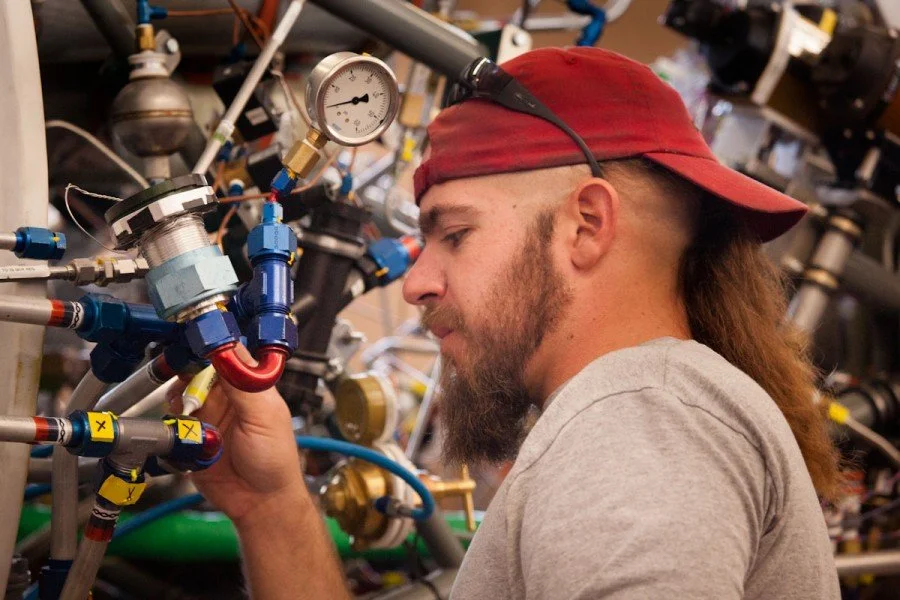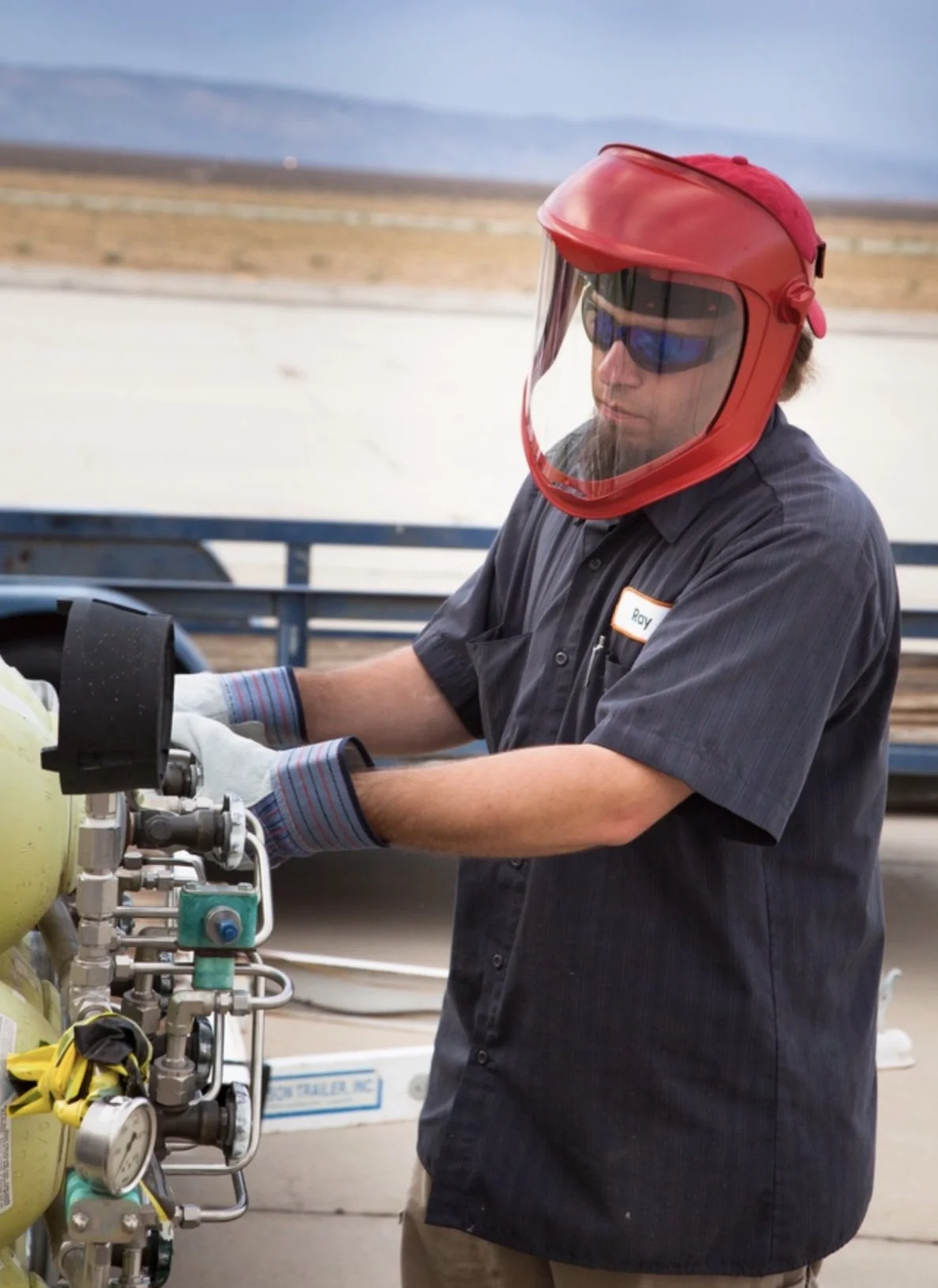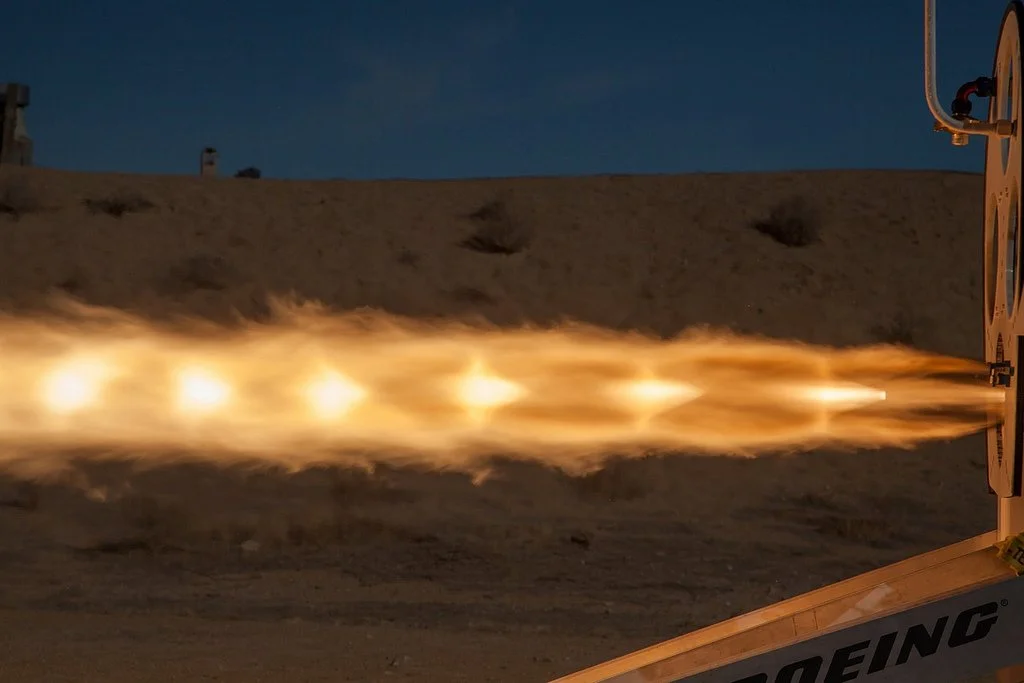From the Bunker: Ray Fitting, Red Team
Due to the amount of detailed work involved prior to each test day, the test team needs a simple visual method to track every single piece of hardware that has been tended to prior to a test. Here Ray Fitting of Red Team torques a line, painting a bright stripe on each nut and line that has already been checked and adjusted prior to the test. Red Team and the rest of the test team are then able to track what still requires attention, and what is in (or out of) place.
This is the eighth in a series of our posts “from the bunker,” interviews with the people behind the scenes at every hot fire and cold flow that takes place at XCOR.
Today we interview Ray Fitting from Red Team.
As always, if you have questions or comments, you can ask them right here, or connect with us on Twitter or Facebook.
Bryan Campen: What is Red Team?
Ray Fitting: Red Team is the team that pretty much does all the hands-on work on the test stand. Whenever we are bringing up pressures and going out for a test day, we are the guys actually around the test stand manipulating valves, regulators and doing any in-field repairs or modifications.
BC: When you joined XCOR, where did you start?
RF: Literally I started off as hangar maintenance and shop help, sweeping and cleaning up [the hangar]. Red Team started probably about three months into working for XCOR. XCOR kind of has a policy of having everyone at some point in time being part of Red Team. It helps to gain a better understanding of how the stands work.
BC: Your day starts pretty early on test days...
RF: When working with a test stand, generally [the Red Team crew] are the ones doing maintenance, repairs or upgrades on a stand. We are constantly working on it, so on a test day we’re some of the first into the hangar.
BC: And at the top of the day you’re there with Checklist and Control? What are you doing?
RF: Yes it’s usually Red Team, Checklist and Control. First part of the day is spent cleaning and prepping the stand to be filled with fuel or liquid oxygen or both.
Then we’re loading the trailers and getting ready to roll out.
BC: How do you integrate with Checklist and Control?
RF: Generally I communicate the most with Checklist, because [Brandon] is doing the challenge and response system. With that, there is a certain lingo and flow and it’s kind of hard to explain. Basically we have worked so long together that when we’re talking we can communicate more with less words. Everyone who is actively involved with a test stand is kind of on the same wavelength and shares this [ability]. And because there are usually not a lot of distractions at the bunker, it is easier to communicate problems and potential fixes.
BC: So you fuel-up and caravan to the bunker. When you arrive, what part of the job requires the greatest focus?
RF: When we bring pressures up and we are getting closer to run, that requires the most focus. We’re listening, going through actuation tests on valves, checking all of the systems, and always listening to and looking at everything to make sure it’s behaving and working the way it’s supposed to. During the final parts of the setup before we arm it and go back into the bunker to press the “Go” button, that’s the most mentally demanding moment for everyone.
Ray opens-up helium bottles and brings-up pressure on the test stand during a test day.
BC: How long did it take until you felt settled-into the role?
RF: It’s one of those things where you never finish learning. There is always something new going on and I am always learning. There are always new tests, new valves, new apparatus. So you eventually get to a point where you have enough knowledge of safety and how things work that you kind of get comfortable— but it’s still a constant learning process.
However, once you get to a place where the hardware is neutral, that’s a little simpler to learn and understand. But it takes a bit of hands-on to get a feel for which system is which plumbing-wise. Then you’re able to take it apart and understand it in your head.
BC: Last question. What’s the most interesting part of the experience?
RF: Watching fire come out of the engine. That means all the work the crew has done has come together, and it did what it was supposed to do.



